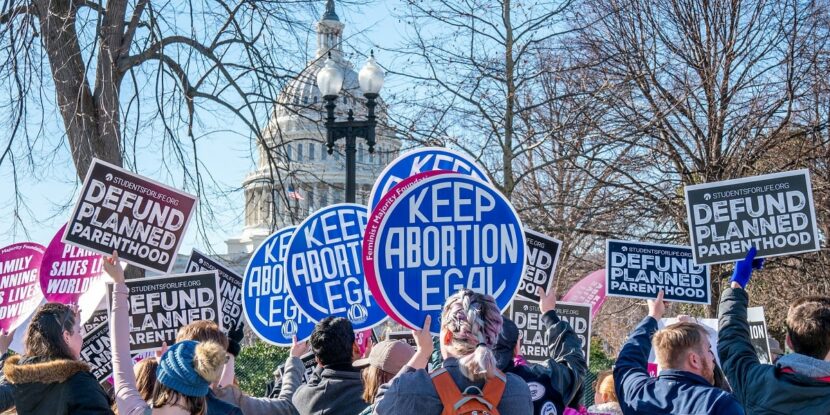January 19th and January 20th of 2018 were both significant days in America. On January 19th, pro-lifers swarmed Washington, D.C., to participate in the 45th annual March for Life. A day later, thousands of men and women, primarily pro-abortion, came to D.C. to attend the 2nd annual Women’s March.
Although these two marches were only separated by a single day, their participants, attitude, and rhetoric were worlds apart.
Beginning with the latter, the rhetoric of the Women’s March on Washington was vile, violent, and angry. Although concerned with change, this march has become well known for the explicit and vulgar ways marchers express their opinions. An absence of facts has also become a prevalent marker of this event; after all, it is simply unfactual to argue that the government not paying for birth control is a “removal of women’s rights.”
This year’s Women’s March was no different, boasting signs displaying language such as:
- “Super-Callous-Fragile-Racist-Sexist-Not-My-POTUS”
- “All in all, he’s just another pr*ck with a wall”
- “Women deserve more rights than guns do”
Please note, these were just the signs that were appropriate enough to include — the list is extensive and explicit.
In contrast to the angry attitude that defined the Women’s March, the March for Life was a joyful event. People still held their beliefs closely and were there to loudly advocate for life, but there was by and large an absence of angry and violent rhetoric.
This is extremely important to note, as the protestors at the March for Life in some ways ought to have more of a reason to be angry. After all, what is more problematic: a president who can be vulgar or millions and millions of babies being slaughtered?
The signs displayed at the March for Life also exhibited the difference between these two marches. While a vast majority of the signs from the Women’s March were vulgar, even those being carried by young children, the March for Life signs were uplifting and to the point. Some examples include:
- “Choose love, choose life.”
- “You are NOT alone! We will help you.”
- “It’s a beautiful day to save lives.”
- “Make unborn babies great again.”
Other signs boasted statistics about the number of babies slaughtered since Roe v. Wade or quotes from figures like Ronald Reagan or Martin Luther King Jr.
Finally, one of the greatest marked differences between the two marches was the age of participation. The Women’s March drew men and women of all ages and walks of life, and the March for Life did the same. However, there was one group of people that dominated the March for Life: young adults.
Almost a quarter of those attending the March for Life in Washington were high school or college students. “The March for Life is largely made up of young people who travel from all across the nation to stand up for life. They are vibrant, passionate, and knowledgeable,” said Jeanne Mancini, president of the March for Life.
For those following both marches, the contrast was significant: one seemed dominated by hate, and the other was dominated by passion. While the pro-abortion advocates at the Women’s March screamed explicit rants, a pro-life generation joined together to lovingly fight for what they believe in.
In the tale of two marches, the March for Life wins out in terms of impact.
Photo credit: Victoria Pickering via Flickr, CC BY-NC-ND 2.0


